DND Celtic Druid featured image is credited to Wizards of the Coast’s D&D 5e Mythic Odysseys of Theros.
Disclaimer: This article contains affiliate links that add gold to our coffers.
One of my absolute favorite classes is the Druid. Between unmatched utility spells, nature-based sentiments, and a wellspring of real-world lore to build from, Druids enrich Dungeons and Dragons games as likeably gentle yet fearsome characters.
While there are many ancient cultures that fit within the umbrella of “Druid,” the Celtic traditions stand strong as a well-documented ancient and modern practicing craft. In roleplaying games, we can find some common elements between history and fantasy, but we will discover greater depth and inspiration by studying Celtic history in particular.
In this article, I hope to provide inspiration and actionable advice for playing a Druid while leveraging lore and tradition from Celtic Druidism.
Druid Inspiration: The Three Druid Elements
Druids have a different sense of nature than other cultures. In Druidic practice, we find three elements to describe the experienceable world alongside the traditional four elements of nature. This inspiration comes from Dana O’Driscoll, Druid Adept and Archdruid of Water, at the Ancient Order of Druids in America.
In the Celtic Druidic tradition, there are three sacred elements that demonstrate things we experience in the world, as explained by ancient Druid Morganwg in Barddas. It is believed that the Celtic Gods divided the earth into these three respective realms: sky, sea, and land. These elements can be thought of individually, but they clearly manifest themselves in the world connectively.
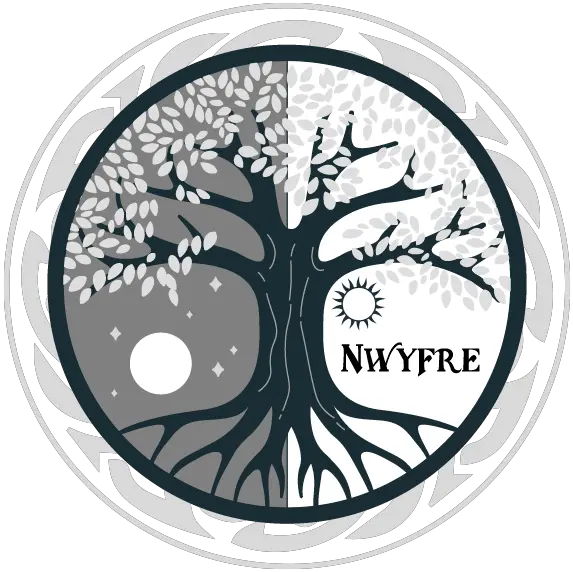
Nwyfre (NOOiv-ruh)
This element represents the spirit of all that is living. It is the lifeforce flowing through the earth. It is associated with the heavens and the sky, but it also relates to the mind and consciousness. It is the future, it is the summer, it is a full moon, it is a wand, it is fire, it is white.
“This is the spark of life that encourages a seed to grow, the magic within the plant; in some forms of herbalism, it would be the spiritual energy of the plant and the plant spirit itself” (O’Driscoll).
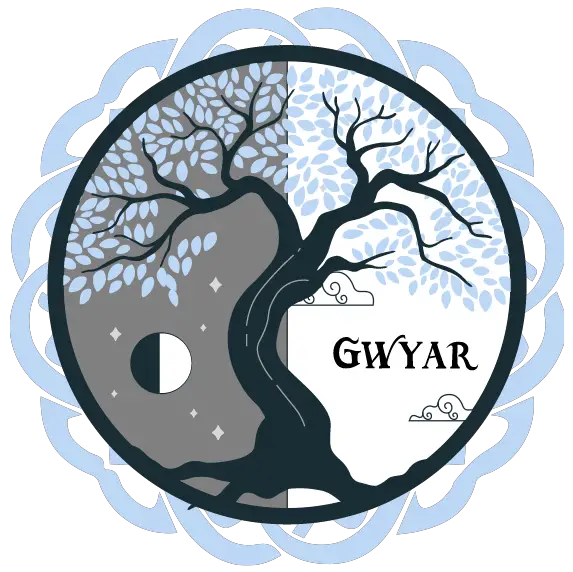
Gwyar (GOO-yar)
This element is the constant change of the world: the flow, the movement, the fluctuation of all things, the current of life. It is represented by water, like an ever-moving and fluid tide. It is the present, it is the spring or fall, it is a half moon, it is a cauldron, it is a well, it is blue.
“Gwyar is responsible for the change we see in plants across the season; it’s the growth of the seed from spout to adult plant and finally decay; it’s the flow of the seasons moving ever forward” (O’Driscoll).
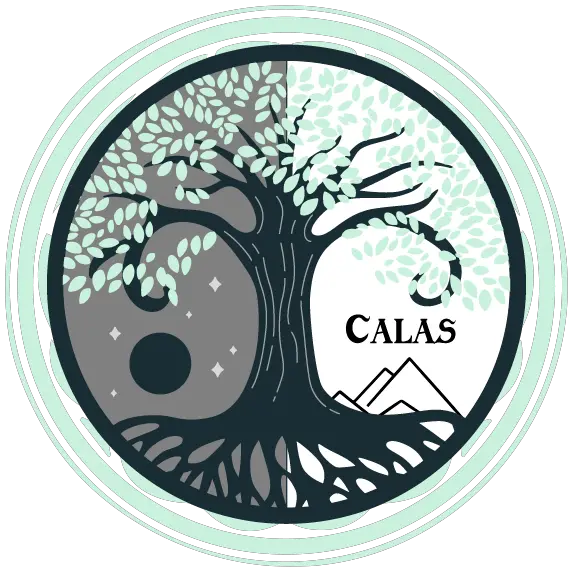
Calas (CAH-lass)
This final element is structure, solidity, and stability. It is the physical substance of all matter. It is represented by stone or earth, but also by bodies and objects and plants. It is the past, it is the winter, it is a new moon, it is a crane bag, it is a tree, it is green.
“Calas is the physical being of the plants in the garden, the soil, the microbial life. It is calas you feel when you pick up the rich soil and run it through your fingers. It is calas that is the feeling of your tools in your hand (although it’s gwyar that makes those tools work!)” (O’Driscoll).
Using the Three Druid Elements for Inspiration
In discovering this lore, I wondered if I could utilize the three elements for character progression. Because Druids have the ability to swap spells daily in 5th edition, and Druids’ skills shine when they focus on utility (though this doesn’t mean they can’t deliver a heavy hit), this class has a roomier space to breathe in terms of gameplay and versatility. Essentially, a player could emphasize character development through their character’s manifested powers and magic.
Depending on which Circle you choose for your Druid, choose one of the three elements above to focus on first. This will be your character’s most familiar element, the one they feel the most comfortable with. This may also play into the land and terrain from which they hail.
This first chosen element will determine which spells are initially chosen and utilized, how they interact with the land around them, and perhaps flavor for their personality and viewpoints of the world.
As the character progresses in gameplay, leveling, and abilities, choose a secondary element to introduce to their spellcasting that they either develop, learn, or unlock. This can happen at any milestone the player feels their character has met. Perhaps certain powers were needed, so they manifested naturally; maybe by connecting to certain landscape, the character grew familiar with it; or it could be that a character sought a mentor to show them how to expand their understanding of the world and to unlock their connection to the other elements.
While which element is chosen in which order will depend on how a player wishes to roleplay the subclass or develop their backstory details, I propose the following paths for each Druid Circle. Recall that Nwyfre (spirit) is lifeforce, Gwyar (sea) is change, and Calas (earth) is material.
- Circle of Dreams: Nwyfre (spirit) -> Gwyar (sea) -> Calas (earth)
- Circle of Land: Calas (earth) -> Nwyfre (spirit) -> Gwyar (sea)
- Circle of Moon: Nwyfre (spirit) -> Gwyar (sea) -> Calas (earth) or Gwyar (sea) + Nwyfre (spirit) -> Calas (earth)
- Circle of Shepherd: Nwyfre (spirit) -> Calas (earth) -> Gwyar (sea)
- Circle of Spores: Calas (earth) -> Gwyar (sea) -> Nwyfre (spirit) or Gwyar (sea) -> Calas (earth) -> Nwyfre (spirit)
- Circle of Stars: Nwyfre (spirit) -> Gwyar (sea) -> Calas (earth)
- Circle of Wildfire: Gwyar (sea) -> Nwyfre (spirit) -> Calas (earth) or Gwyar (sea) + Nwyfre (spirit) -> Calas (earth)
Spellcasting
In terms of spellcasting, a player could choose certain spells based on their elemental familiarity and progression. Think of schools of magic as having particular elemental associations. These categories could be debated, so choose for yourself for what makes sense to you, and perhaps realize that some schools could fit multiple categories.
- Nwyfre (spirit, mind): Abjuration, Conjuration, Divination, Enchantment, Evocation, Necromancy
- Gwyar (flow, change, sea): Conjuration, Illusion, Necromancy, Transmutation
- Calas (earth, structure, material, body): Conjuration, Evocation, Necromancy, Transmutation
You might also consider looking at spells individually. As you will see, spells may be found appropriate for multiple elements:
- Nwyfre spells would include effects that call upon spirits, heal, produce light, or influence the minds of creatures (Guidance, Animal Friendship, Beast Bond, Absorb Elements, Charm Person, Cure Wounds, Faerie Fire, Protection from Evil and Good, and so forth).
- Gwyar spells have a flow of energy, power weapons or objects, or alter the state of things, including healing (Control Flames, Druidcraft, Shillelagh, Cure Wounds, Gust, Poison Spray, Fog Cloud, Enlarge/Reduce, Elemental Weapon, Plant Growth, Polymorph, et cetera).
- Calas spells affect the body or structure of a material object, heal, provide stability and protection, and ground the spellcaster (Guidance, Mending, Absorb Elements, Cure Wounds, Earth Tremor, Entangle, Barkskin, Earthbind, Enhance Ability, Heat Metal, Dispel Magic, Erupting Earth, Meld into Stone, Summon Fey, Fire Shield, and so forth).
Druid Inspiration: Art and Ceremony
Immersing your character in Druidic practices is an excellent way to incorporate these Celtic element inspirations. Here are several examples of how to roleplay your Druid based on Celtic tradition.
Poetry and Prayer
Consider adding simple poetry to your repertoire. Speak using the terms of the elements in Gaelic tongue. The following prayer comes from The Druid’s Garden. When your character casts a healing spell or Plant Growth, for instance, say the following simple prayer in character:
Calas, the form and the shape
Gwyar, the flow and the change
Nwyfre, the spark of life
Sacred elements spiraling
Bless this land’s growing.
In The Celtic Heroic Age (2003) (pg. 265), John Carey translated The Song of Amergin from the Book of Leinster. This poem, thought to be the earliest spoken Irish poem, contains myriad inspirations for Druidic dialogue:
I am a wind in the sea (for depth)
I am a sea-wave upon the land (for heaviness)
I am the sound of the sea (for fearsomeness)
I am a stag of seven combats (for strength)
I am a hawk upon a cliff (for agility)
I am a tear-drop of the sun (for purity)
I am fair (i.e. there is no plant fairer than I)
I am a boar for valour (for harshness)
I am a salmon in a pool (for swiftness)
I am a lake in a plain (for size)
I am the excellence of arts (for beauty)
I am a spear that wages battle with plunder.
I am a god who forms subjects for a ruler
Who explains the stones of the mountains?
Who invokes the ages of the moon?
Where lies the setting of the sun?
Who bears cattle from the house of Tethra?
Who are the cattle of Tethra who laugh?
What man, what god forms weapons?
Indeed, then;
I invoked a satirist…
a satirist of wind.
Ceremonies and Vision Quests
According to Celtic Druid Temple, “the Celtic way of spirituality shows us that sacred places are found and not created. This is why Celtic Druids would hold ritual ceremony in a natural setting.” Though Druids don’t necessarily worship deities in Dungeons and Dragons, they may worship nature or the Weave of magic flowing through all living things.
When a character experiences a significant event, such as performing a heroic act or mourning loss and tragedy, they may wish to develop their character and resolve by performing ceremonies in a natural space. When a character is between two or more difficult decisions, communing with nature is a way for a player to resolve their uncertainty without forcing a division within the party.
Natural places for ceremonies and vision quests include hearths, prolific trees, monumental rockscapes, natural landmarks, water oases, and so forth. Practices used in these ceremonies include meditation, guided dreaming, chanting, drumming, singing and dancing. In a ceremony, the Druid focuses on their connection to their tribal gods, their ancestors, themselves as individuals, or nature in order to better visualize themselves in the vast web of life.
Utilize natural imagery in dreams and vision quests. Consider asking your Dungeon Master to provide imagery and descriptions of dreams. Taking time to describe a ceremony need not be long, but a simple explanation of what a character sees or feels is sufficient to set the tone of character development for upcoming events.
Dream Imagery for Druids
| Animal Symbol | Meaning |
|---|---|
| Stag | Nobility, honesty, patience, persistence, pride, success. Birch tree. |
| Cat | Observant, perception, senses, intution, insight, diverging from paths, creativity. Rowan tree. |
| Adder | Communication, persuasion, curiosity, inspiring, spontaneous, unpredictable, uncooperative if disagree. Ash tree. |
| Fox | Cunning, sly, guile, intelligence, evasive, intense, courage, loyalty, honor, friendship. Alder tree. |
| Bull | Large, solid, broad, strong, stable, caring, stubborn, defensive, trustworthy, intuition, moody. Willow tree. |
| Seahorse | Flexible, resourceful, adaptable, clever, small, understanding of complexities, affectionate, sharp. Hawthorn tree. |
| Wren | Moral responsibility, honor, integrity, cheerful, friendship, caregivers, burdened. Oak tree. |
| Horse | Powerful, exhuberant, competitive, charging, talent, bravado, boisterous, gregarious, straightforward, leader. Holly tree. |
| Salmon | Introverted, quiet, reflective, inpsired, visionaries, artistic, observant, poetic. Hazel tree. |
| Swan | Aristocratic, spiritual, transformation, growth, eloquent, refined, tasteful, beautiful, composed, code of conduct, passionate. Vine plant. |
| Butterfly | Social, gentle, caring, revere freedom, dreamers, cheerful, empathetic. Ivy plant. |
| Wolf | Exclusionary, alone, pack animal, loyal, brave, fearless, honorable, warrior, uncompromising, strong, devoted, stubborn, strong. Reed plant. |
| Hawk | Keen, lofty, wise, knowledgable, teachers, single-mindedness, floating, focused, open to philosophies, moral. Elder tree. |
| Symbol | Meaning |
|---|---|
| Acorn | Growth, potential, health, wisdom, youth, perserverance |
| Triquetra (Celtic Knot) | Three, unity, flow, eternity |
| Cross | Four, directions, quadrants, seasons, elements |
| Double Spiral | Two, harmony, balance, opposites, coexistence, day and night, life and death, creation and destruction |
| Bull | Large, solid, broad, strong, stable, caring, stubborn, defensive, trustworthy, intuition, moody. Willow tree. |
| Triskele (Triple Spiral) | Sun, life source, life, progression, eternity |
| Shamrock | Three, power, elements, luck |
| Tree of Life | Strength, growth, connection, ancestry, relation of life and death, nourishment, nature connection |
| Icovellavna (Motherhood Knot) | Motherly love, bonds, two hearts interlinked |
| Dara Knot | Strength, wisdom, oak tree, endurance, power, inner strength |
| Wheel of Taranis (Solar Cross) | Solstice, equinoxes, passage of time, seasons |
| Celtic Bull | Sacrificial rituals, wealth, status, fertility, ancestry, kinship |
| The Awen | Inspiration, balance, harmony, time, creativity, knowledge, triad |
| Directions | Plants |
|---|---|
| Earth (North) | Plantain, Reishi mushroom, Apple |
| Air (East) | Stinging Nettle, Aster, Beech |
| Fire (South) | Goldenrod, Bee Balm, Cedar |
| Water (West) | Calamus, Boneset, Willow |
| Solar (Above) | Elder, Elderflower, White Pine |
| Soil (Below) | Sassafras, Burdock, Oak |
| Lunar (Within) | Hawthorn, Catnip, Elder tree |
Druidic Holidays
Important to the practice of Druids, festivals and holidays were celebrated not only as a changing of the season, but to restore and prepare the land and people for the coming seasons.
From Britannica, we get a summary of Celtic religious festivals:
In Ireland the year was divided into two periods of six months by the feasts of Beltine (Summer’s beginning, May 1) and Samhain (Summer’s end, November 1), and each of these periods was equally divided by the feasts of Imbolc (Spring’s beginning, February 1), and Lughnasadh (Deity worship, August 1).
Imbolc was a feast of purification for the farmers’ upcoming crop season. It was sometimes called oímelc (“sheep milk”) with reference to the lambing season. Beltine (“Fire of Bel”) was the summer festival, and there is a tradition that on that day the druids drove cattle between two fires as a protection against disease. Lughnasadh was the feast of the god Lugh.
Players might consider consulting their Dungeon Master for appropriate holidays to celebrate and ritualize with the sentiments above in mind. In these holidays, Druids make ritual and give offerings.
Conclusion
If you want to play a Celtic-based Druid in Dungeons and Dragons, chances are the rich lore and practices recorded throughout history will provide an abundance of inspiration. If you are interested in more advice for playing Druids, check out these other articles from Flutes Loot.

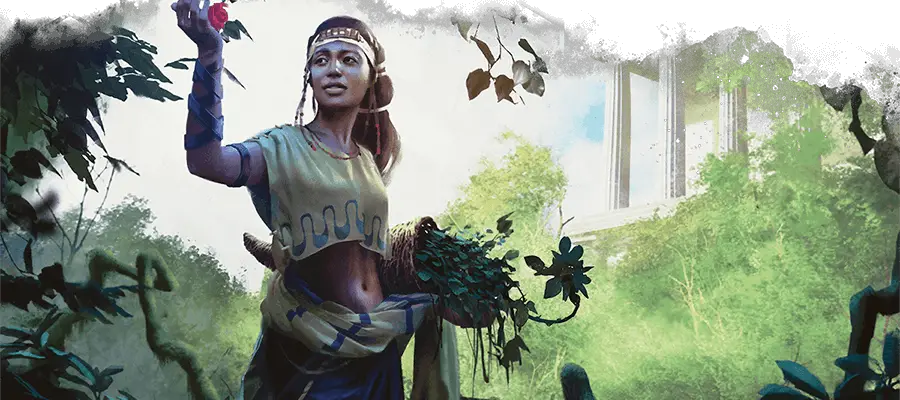
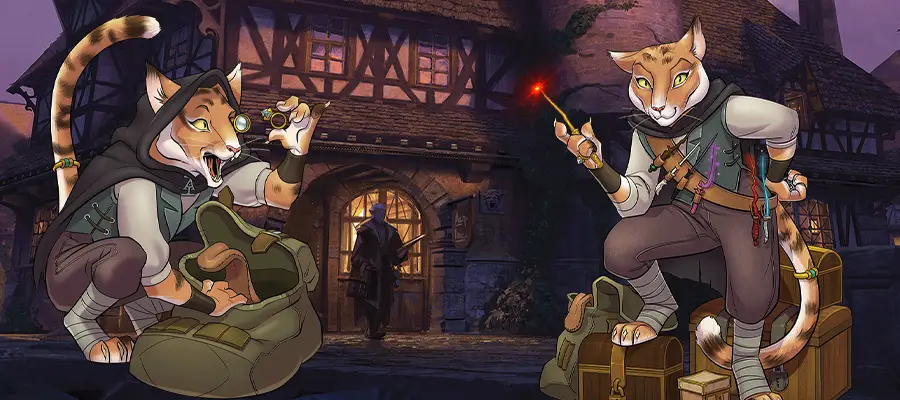
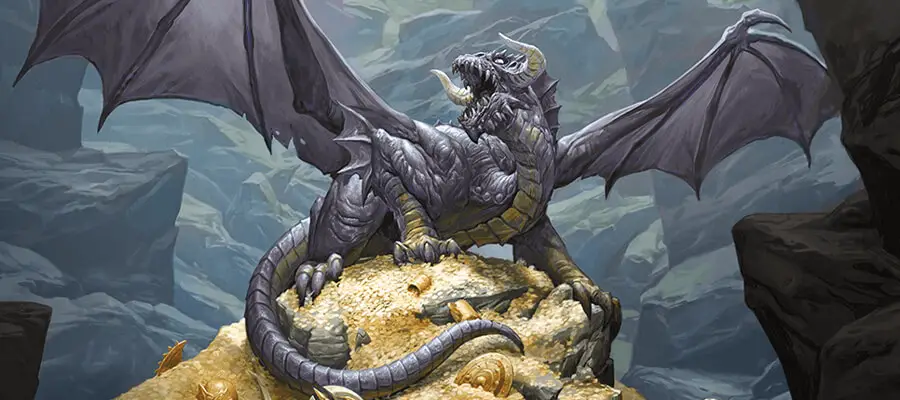
Wow this is really detailed stuff and I love it. I love these character concepts where you are able to really take the growth and development of a character to a much deeper level. It just ends up feeling more satisfying, especially in these more spiritual classes…I guess is the best way to put it. The idea of starting in one area of focus and then as your character progresses, opening your character up to new teachings or ideas is great.
I’ve always been drawn to this type of character for long-term story arc. One that isn’t so combat focused. The idea of a First People’s druid or cleric. Inspired by the ghost dancers or medicine men has always been interesting as well. And you can find these cultures all over the world, which is something I find fascinating.
So I’m a Christian and a pastor…and one of the things I find frustrating about our history is that my faith was used as a tool for conquest by empires for so long. They were “christian” empires in name only and it gave them a convenient way to justify colonialism and quests for riches and power. Why this is so devastating is that it totally washed away the beautifully unique spiritual cultures and traditions. If it didn’t look like western Europe then it needed to be “christianized” no matter the cost. Which is not who or what Jesus taught. In my opinion, these cultures and practices all have ties drawing them back to the Creator. They were created unique and beautiful and interesting because our Creator is all of those things. All that history that has been lost is heartbreaking. And it is wonderful to find ways to at least honor them, even if it is through games.
I love latching onto long-term story potential, and Opal is great at identifying those opportunities.
And thank you for sharing your unique perspective! You could readily take those historical concepts and plop them into a D&D character, particularly a Cleric proficient with History checks. 😛
The more I play D&D, the more I find myself focused on storytelling through character development, new focuses on powers, and so forth. I actually kind of like the idea of “nerfing” my character, or maybe not choosing such optimized features/spells, at first because I want to explore how I can facilitate my character’s growth through the game. I find it very rewarding, especially for long-term campaigns!
And I completely agree with you about fulfilling or reworking my own aspirations and beliefs as a player through gameplay. It can be very therapeutic to simulate the human experience, especially when history and reality has been disappointing in some regards. I’m glad you enjoyed the article Ian! Thanks for being such an engaging reader over the years! 🙂
Oh I was also going to mention this…
A few games ago I was playing a cleric, but this would work for any class that gets to change spells each morning. I wanted to really incorporate the spiritual side of it and really bring in a relationship to that deity. So what I did was, with the help of my DM, created a kind of chart I would use to decide my spells for that day.
I used 1 dice per spell slot. I would then assign a spell to each side of that dice that I might want to use that day. A spell could only appear on any individual die once, but that spell could be on every single die I used if I really wanted to up the chances of getting it. I used a 1d6, but that could be adjusted for how well you’ve been honoring your god, so to speak. So it would look like this…
Die 1
1-Bless
2-Healing Word
3-Spiritual Weapon
4-Dispel Magic
5-Silence
6-Guiding Bolt
Then Die 2 might be something like
1- Spiritual Weapon
2-Silence
3- Cure wounds
4-Spirit Guardians
5- Detect Magic
6- Hold Person
And so on until I had as many die as I had spell slots.
Then after a long rest I would roll the dice, this would simulate a time of prayer or meditation. And then I would resolve the dice based off of what showed up. If I rolled a 1, 4, 3, 3, or whatever I would then go to the chart for that morning and slot my spells in.
To spice it up even more, if I rolled a double, my DM would choose, as my deity, which spell to assign. And he also had the freedom to, during that time, assign a spell that I might need or might not need. Depending on how good a follower of said god I had been.
Was a little extra work. But really brought a little flash of divine intervention into the setting.
Anyway just a thought. Great stuff as always!
That’s a cool way to roleplay your spiritual character! I try to add rituals of meditation and supplication when I play such characters because it makes them feel like rich characters.
I love this! I currently have a Druid player in a campaign I’m running, so I’m definitely going to be adapting some of these ideas for her, haha. Especially a huge fan of the dream symbols, I love giving my players visions and prophecies through dreams.
I love dream sequences! This article I wrote a few years ago might also be of interest to you in that regard: https://www.flutesloot.com/dreams-as-a-storytelling-tool-in-rpg/
Not one mention of Shillelagh??!
Good stuff though
Shillelagh is always a fun option for Druids if the player can pronounce it 😛